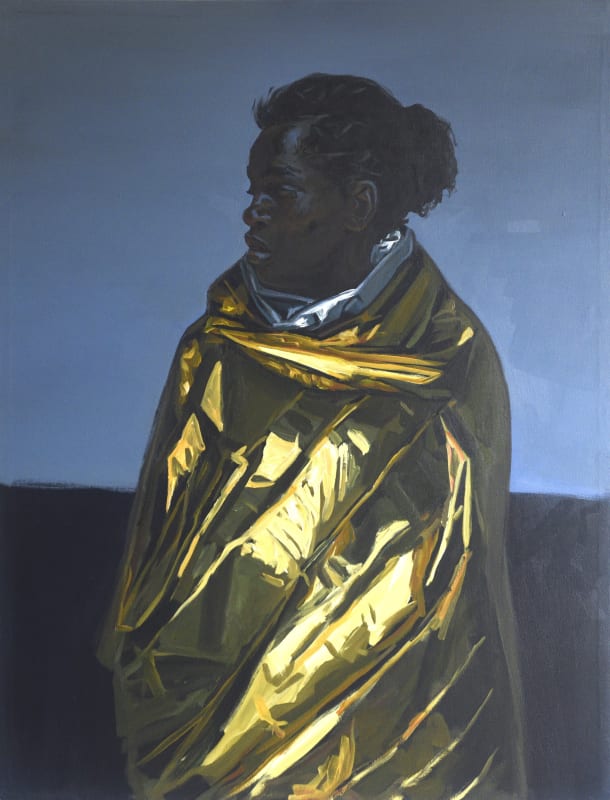Private View: Saturday 19 September, 2 - 6 pm
London (Wandsworth)
Lone figures appear standing wrapped in silver and gold blankets against moody grey skies while exhausted faces, framed by their life jackets, look pleading out from the canvas. These exquisitely detailed, poignant paintings are the work of Ethiopian artist Tewodros Hagos, inspired by contemporary journalistic imagery and footage of the ongoing migrant crisis. Entitled The Desperate Journey, the artist’s solo exhibition at Kristin Hjellegjerde’s Wandsworth space in London explores issues of voyeurism and othering in the face of human tragedy.
Hagos recalls seeing ‘the shocking news about the body of a Syrian boy found lying face-down on a beach’ and was unable to get the image out of his head. The artist began researching the migrant crisis in an attempt to understand what was happening and was struck by the journey that thousands of people risk every year in search of what most of us take for granted: a safe place to live. ‘Throughout the last decade, the whole world has witnessed the news and stories of migration atrocities on nearly a day-to-day basis, but as we are bombarded with imagery, it risks becoming normalised when, in fact, it remains one of the worst humanitarian crises of our time,’ commented the artist. ‘The question is: how long will we watch this human tragedy?’
Working with the classical medium of painting, Hagos invites the viewer to experience these images at a slower pace and more intimate scale. Whilst the works visualise a larger narrative of collective suffering, each painting, especially the close-up portraits, possesses a distinct personality and emotional atmosphere that emphasises the subjects as complex individuals rather than just a number. Journey (8), for example, depicts a young boy wearing a bright orange life jacket with his head tilted to the side, his eyes seemingly staring directly at the viewer in an expression of forlorn desperation whilst the figure in Journey (3) stands alone, wrapped in a silver rescue blanket, gazing into the distance as waves crash around him. We are able to instantly recognise and relate to these scenes, but at the same time, the stylised composition has an almost surreal effect that demands a deeper level of engagement and encourages an innate emotional response from the viewer.
The contrast of the dark landscape with the luminosity of the life-jackets and the metallic shine of the rescue blankets further heightens the unsettling atmosphere. Figures appear lost in the empty expanse of an unwelcoming hinterland, or barely visible in a dangerously overcrowded boat as it floats in the vast sea; throughout, a sense of threat, isolation, and loneliness pervades. And yet, these works also possess an arresting, mournful kind of beauty that appeals strongly to a sense of shared humanity whilst simultaneously making us aware of our privileged position as passive spectators and challenging us to consider the realities that we choose to ignore.


